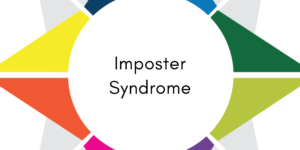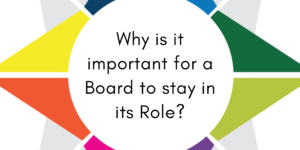Did you ever think about speaking up in a board meeting and then decide not to because you didn’t want to be impolite or seem like a misfit? If so, you may have been a victim of “Groupthink”. Groupthink is a phenomenon that occurs when the desire for group consensus overrides people’s common sense desire to present alternatives, critique a position, or express an unpopular opinion. The desire for board team cohesion and courtesy can drive out good decision-making and problem solving. Board members who stay silent too often risk becoming frustrated and disillusioned, resulting in a loss of enthusiasm and reduced creativity.
Many governance failures have resulted from a dominant leader making a decision, and the people around them supported it despite their own concerns. Often that only becomes clear with the benefit of hindsight.
Irving L. Janis coined the term “Groupthink,” and published his research in the 1972 book, “Groupthink.” His findings came from research into why a team reaches an excellent decision one time, and a disastrous one the next. What he found was that a lack of conflict or opposing viewpoints led to poor decisions, because alternatives were not fully analyzed, and because groups did not gather enough information to make an informed decision. He suggested that Groupthink happens when there is:
- A strong, persuasive group leader
- A high level of group cohesion
- Intense pressure from the outside to make a good decision
Groupthink may manifest in a number of different ways –
Rationalisation
Rationalisation occurs when team members convince themselves that despite evidence to the contrary, the decision or alternative being presented is the best one. “Those other people don’t agree with us because they haven’t researched the problem as extensively as we have.”
Peer Pressure
Peer Pressure happens when a team member expresses an opposing opinion or questions the rationale behind a decision, the rest of the team members work together to pressure or penalise that person into compliance. “Well if you really feel that we’re making a mistake you can always leave the team.”
Complacency
After a few successes, the group begins to feel like any decision they make is the right one because there is no disagreement from any source. “Our track record speaks for itself. We are unstoppable!”
Moral High Ground
Each member of the group views him or herself as moral: The combination of moral minds is therefore thought not to be likely to make a poor or immoral decision. When morality is used as a basis for decision-making, the pressure to conform is even greater because no individual wants to be perceived as immoral. “We all know what is right and wrong, and this is definitely right.”
Stereotyping
As the group becomes more uniform in their views, they begin to see outsiders as possessing a different and inferior set of morals and characteristics from themselves. These perceived negative characteristics are then used to discredit the opposition. “Lawyers will find any excuse to argue, even when the facts are clearly against them.”
Censorship
Members censor their opinions in order to conform. “If everyone else agrees then my thoughts to the contrary must be wrong.” Information that is gathered is censored so that it also conforms to, or supports the chosen decision or alternative. “Don’t listen to that nonsense, they don’t have a clue about what is really going on.”
Illusion of Unanimity
Because no one speaks out, everyone in the group feels the group’s decision is unanimous. This is what feeds the Groupthink and causes it to spiral out of control. “I see we all agree so it’s decided then.”
How to Avoid Groupthink
The challenge for any board is to create a climate that minimises the risk of Groupthink. When the stakes are high, it is vital for the board to make good decisions. To avoid Groupthink, it is important to have a process in place for checking the fundamental assumptions behind important decisions, for validating the decision-making process, and for evaluating the risks involved. For significant decisions, make sure your board:
- Focuses on objectives
- Explores alternatives
- Encourages ideas to be challenged without reprisal
- Examines the key risks and consequences if each of the options is chosen
- Tests assumptions
- Uses the Ladder of Inference to check each step of the decision-making process
- If necessary, goes back and re-examines initial alternatives that were rejected
- Gathers relevant information from outside sources
- Processes this information objectively
- Has at least one contingency plan
There are several group techniques that can help with this, including brainstorming, Six Thinking Hats, Disney Planning Method, and the Delphi Technique.
How to Overcome Groupthink
If Groupthink is already happening in your boardroom, it’s important that you recognize and acknowledge it quickly, so that you can overcome it and quickly get back to functioning effectively. Discuss the signs among the board, and agree how to deal with it. It may be useful to involve an independent facilitator to support and challenge the thinking and decision-making at a Board Away Day workshop.
- Groupthink: A Study in Self Delusion (Free with Audible free trial)
- Groupthink Complete Self-Assessment Guide
- GROUPTHINK: A Case Study on Herd Mentality
- The Oxford Handbook of Corporate Governance
See more of our recent blog posts below!
- Sample Policy on Board Only meetings
- Annual Review Process – What you need to know
- If You’re Leading From The Boardroom – Tell Everyone
- Imposter Syndrome
- Why is it important for a Board to stay in its Role?
Not a member of the Leading Governance website yet? Consider joining today and get access to thousands of pounds worth of essential Governance materials, from Sample Board Agendas to Board Member Review templates and much more! Click here to find out more.






